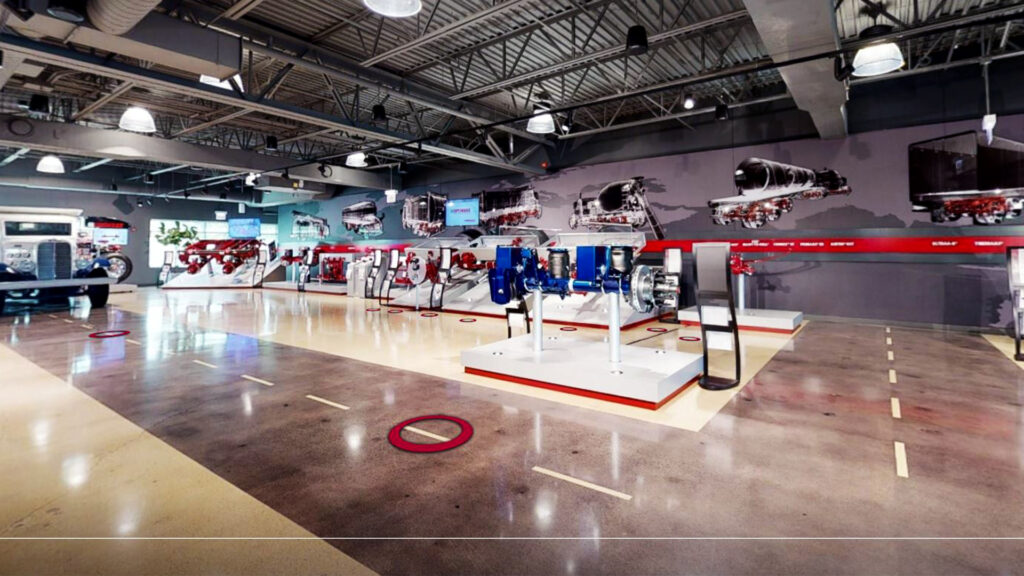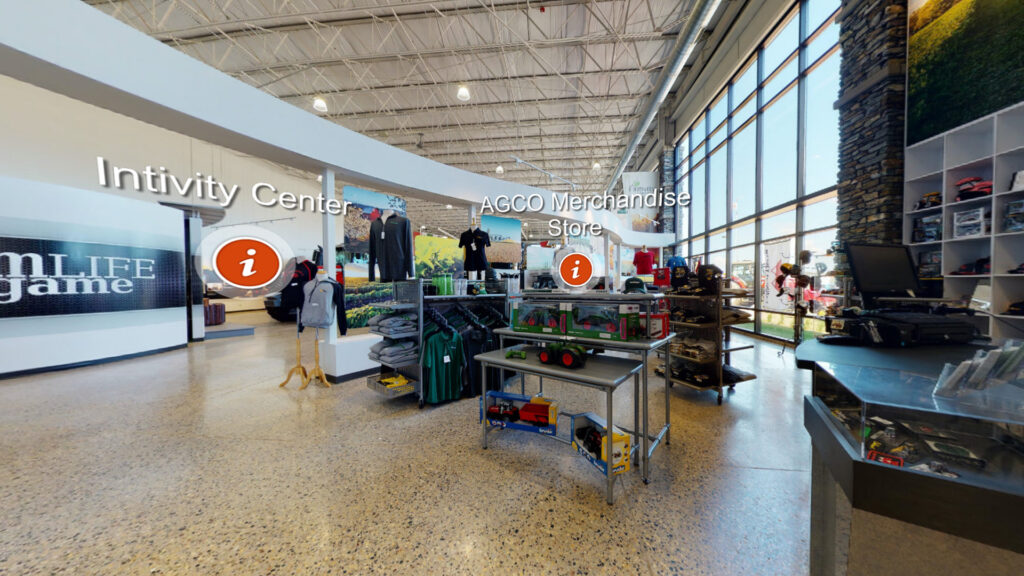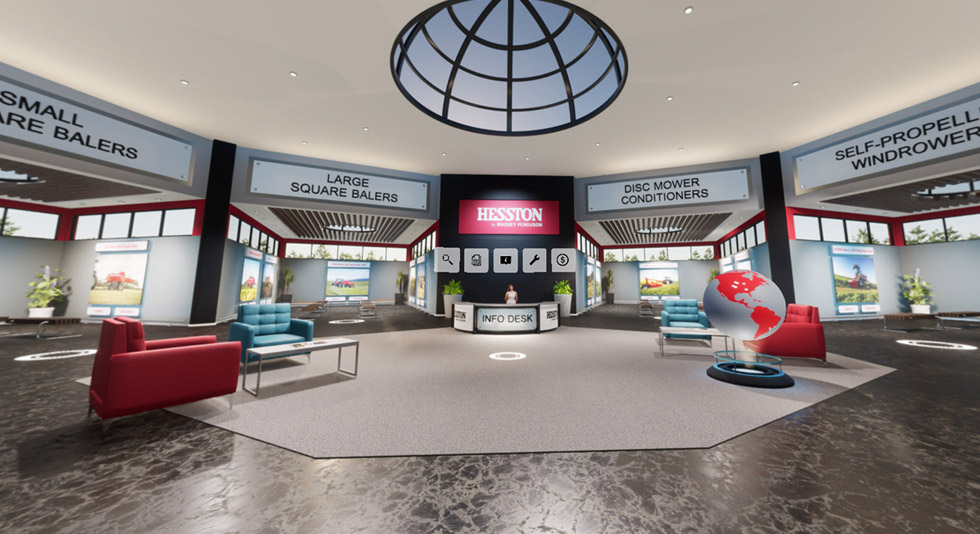
Create a Memorable Shopping Experience with a Virtual Showroom
Create a virtual showroom to expand your brand’s reach and provide your customers with a memorable shopping experience.
According to McKinsey, both B2B buyers and sellers prefer the “new digital reality.” “More than three quarters of buyers and sellers say they now prefer digital self-service and remote human engagement over face-to-face interactions – a sentiment that has steadily intensified even after lockdowns have ended.”
While safety regulations have played an obvious role in this trend, the authors note that “self-service and remote interactions have made it easier for buyers to get information, place orders, and arrange service, and customers have enjoyed that speed and convenience.” These changes in consumer behavior and preferences will require businesses to find new ways to engage with their customers and provide them with superior digital shopping experiences. One way to accomplish this is with a virtual showroom.

What is a Virtual Showroom?
A virtual or digital showroom allows brands to display and sell digital versions of their products to customers. A digital showroom is a 360° immersive experience where users can navigate and interact just like in a real showroom. Products are digitally simulated using a 3D scanning process to create product replicas. Other features of virtual showrooms include live-streaming, embedded media, product information, and chat integration.
Virtual showrooms can be a permanent virtual space for businesses to showcase their brand, products, and/or services. Or businesses can create temporary solutions such as exhibitions for one-time or limited events.

What Customers Can do in a Virtual Showroom
Much like a real-life shopping experience, customers can interact with their surroundings. They can visit different counters and click on different products on display. Products are displayed in a 360° view. But unlike an in-person shopping experience, customers are provided with detailed product information. For example, PowerPoint presentations and pdf files.
Customers can also easily initiate conversations with the sales team. These face-to-face interactions significantly increase conversion rates and sales revenue. And Augmented Reality (AR) features allows customers to try on products. For example, a customer shopping for clothing or jewelry could visualize how the real-life product may look on them.
And perhaps most importantly, customers can buy products while visiting the virtual showroom. Customers appreciate the ease of the shopping experience while business owners enjoy a potentially unlimited revenue stream.

Virtual showrooms offer a broad range of benefits. Most significantly, a digital showroom vastly expands a brand’s reach. Brick-and-mortar stores are no longer limited by the confines of their four walls. They can display as many products as they want in online B2B showrooms or B2C showrooms. And for digitally-based businesses, virtual showrooms give them an important element that is missing from their businesses – a space for customers to experience and interact with products.
Virtual Showroom Benefits
Virtual showrooms offer a broad range of benefits. Most significantly, a digital showroom vastly expands a brand’s reach. Brick-and-mortar stores are no longer limited by the confines of their four walls. They can display as many products as they want in online B2B showrooms or B2C showrooms. And for digitally-based businesses, virtual showrooms give them an important element that is missing from their businesses – a space for customers to experience and interact with products.
Some additional benefits of virtual showrooms include:
- Reduced operating costs. Digital showrooms have no rent, utility, or maintenance costs.
- Unlimited product variations. Showcase your products in every color, size, and variation to appeal to each customer’s unique tastes.
- Make shopping fun. A digital showroom is an immersive and interactive experience. It incorporates an entertainment quality into the shopping experience.
- A higher level of service. Offer an unmatched level of shopping assistance while accurately communicating product information in an engaging way.
- Accessibility. Virtual showrooms are web-based, allowing customers to access the showroom from anywhere and at any time from an internet-enabled device.

Build Your Brand with Online B2B Showrooms
When most people think of showrooms, they imagine a traditional retail setting. For instance, a small clothing or electronics store. Yet online B2B showrooms are becoming increasingly common and are an incredibly powerful sales tool. For example, a B2B business could use a virtual showroom to display engineering products, machinery, or software solutions.
Some of the advantages of using virtual showrooms in the B2B sector include:
- Generating more leads. Sales prospects often do not have physical access to your products or services. But with a virtual showroom, you can get more face-to-face meetings with prospects than ever before.
- Connect on a global scale. Having a showroom online allows you to showcase your products or services to anyone, anywhere, and at any time.
- Leverage social networks. Your prospects can easily share your virtual showrooms with their friends. Moreover, you can leverage social media platforms to promote your showrooms and gain additional exposure.
- Gain a competitive edge. Providing your prospects and customers with an immersive virtual experience will help you to separate your brand from your competitors.
Setting Up a Virtual Showroom
The prospect of setting up a showroom online may seem overwhelming. After all, few business owners have the training or experience to create a virtual world. Yet creating a digital showroom is not as complicated as you may think. The first step is to find a reliable technology partner with a proven track record of helping both B2C and B2B organizations to create immersive virtual showrooms.
Once you select a partner, you will need to share your design requirements. This can include information about your brand, what you want your virtual showroom to look like, product and/or service information, and videos. Your technology partner will take care of the rest. EngageVE has a proven track record of creating immersive virtual showroom experiences for a broad range of businesses. To learn more about how EngageVE can help you to offer your customers a memorable experience and grow your business, reach out to info@engageve.com to get the conversation started.

 630.541.7929
630.541.7929 